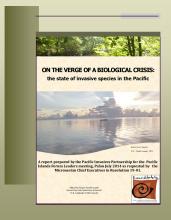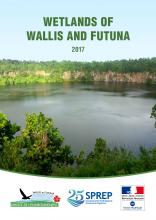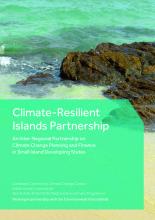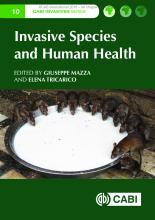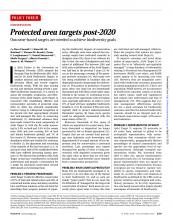Control of house mice preying on adult albatrosses at Midway Atoll National Wildlife Refuge


Biodiversity Conservation, BRB
Available Online
Duhr,M.
,
Flanders, B.
,
Flint, E.N.
,
Howald, G.
,
Hunter, S.A.
,
Norwood, D.
,
Taylor, R.V.
2019
Sand Island, Midway Atoll National Wildlife Refuge (MANWR), is home to 21% of all nesting black-footed albatross (Phoebastria nigripes) and 47% of all nesting Laysan albatross (P. immutabilis) worldwide. During the 20152016 nesting season predation and disturbance by non-native house mice (Mus musculus), here documented for the first time, resulted in 70 abandoned nests, 42 adult birds killed and 480 wounded. In the following nesting season the affected area increased, resulting in 242 dead adults, 1,218 injured birds and 994 abandoned nests. Mouse predation activities triggered a mouse control response to reduce mouse densities in the affected areas using multi-catch live traps, kill traps, and limited use of anticoagulant rodenticides in bait stations. In 20162017 we applied a pelleted cholecalciferol rodenticide, AGRID (Bell Laboratories, Madison, WI), at a rate of 20 kg/ha in all affected areas. The purpose of this study was to evaluate the efficacy of using AGRID to reduce mouse density and rate of mouse attacks on nesting albatrosses on Sand Island. Mouse attacks decreased and mouse abundance was reduced following rodenticide applications in the plots treated in December but changes in attack rates in the plots treated in January were not detectable and mouse abundance increased subsequent to treatment. The plots in the December treatments were much larger than those used in January and rainfall rate increased after December. A minimum size of treatment area may be necessary to achieve a reduction in injury rates in albatrosses. No deleterious effects were observed in non-target organisms. The casualties resulting from mouse predation (mostly Laysan albatross) represent a small proportion of the 360,000 pairs nesting on Sand Island. However, the risk to adult breeding albatrosses representing such a large fraction of the global population prompted the United States Fish & Wildlife Service to prioritise mouse control efforts.
